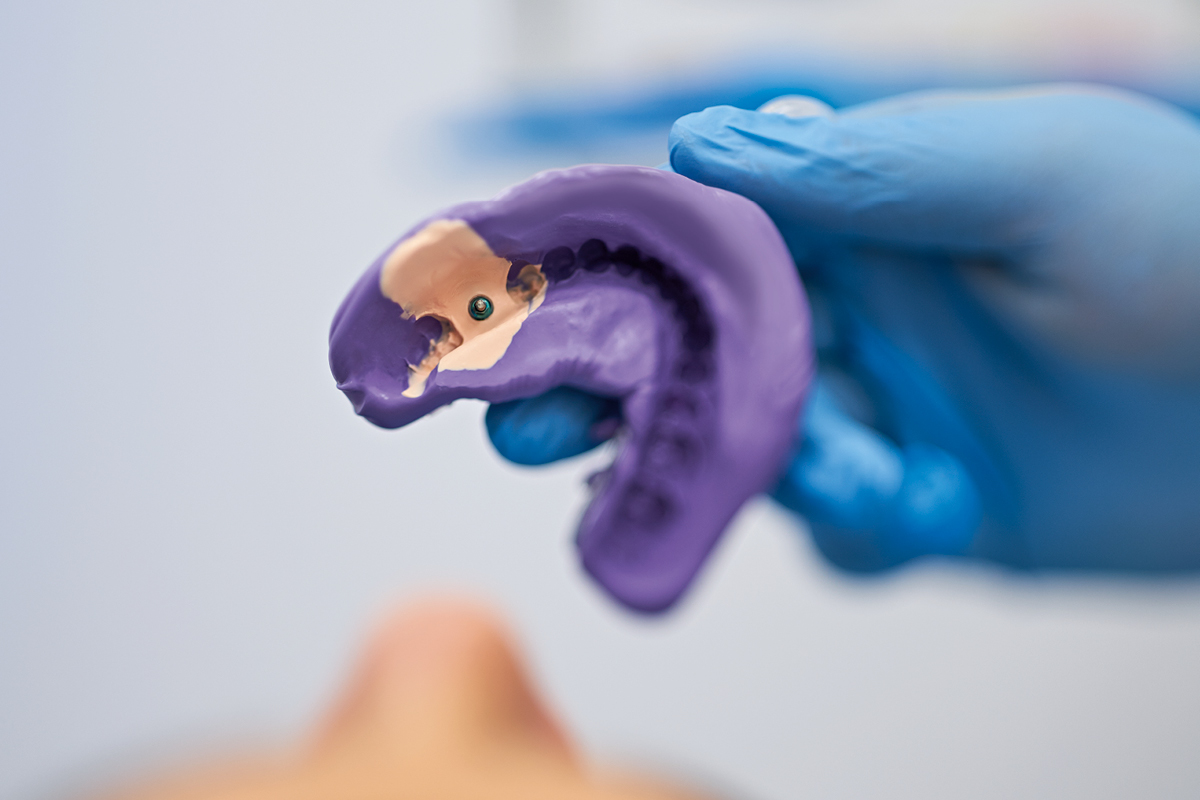
Impression-taking constitutes one of the most important steps in the prosthetic work-flow and is crucial for correctly transferring the situation inside the oral cavity onto a gypsum model in order to create a prosthesis. It is the starting point for all the subsequent prosthetic phases, which will therefore be influenced by it.
With implant prostheses, high precision in the recording of the three-dimensional spatial position of the implants is particularly important, given their rigid connection with the bone. It is extremely important that the prosthetic structure connects passively with the implants in order to obviate permanent tensions and stresses on both the biological tissues (bone and peri-implant soft tissues) and the components of the prosthesis.
A great many factors influence the accuracy and precision of prostheses on implants. The slant of the implants and the lack of parallelism between them is often a factor that complicates impression-taking. The position of slanted implants is far more difficult to reproduce than that of parallel implants and the forces applied when removing the impression are also far higher, with consequent risks of transfer mobilisation. The choice of the material and the impression-taking technique are equally important, because a given material and the technique with which it is used can give significantly different results from other materials with regard to the precision and accuracy of the transfer of the implants’ three-dimensional position.
Characteristics of impression materials for implant prostheses
Of all impression materials, elastomers and particularly polyethers (PE) and polyvinylsiloxanes (PVS) or addition silicones are the best choices for impression-taking on fixed and implant prostheses, on account of their excellent physical and mechanical properties1,2.
Indeed, both these materials are characterised by a high final hardness, that in most cases, varies from 40 to 70 Shore A, and is necessary to stabilise the position of the transfer(s) within the impression. They both also present high tear resistance, which reduces the risk of impression tears, especially in the transfer area during removal from the oral cavity.
Their ability to flow over wet surfaces, identified by the contact angle of polyethers and addition silicones, is also excellent. Polyethers are materials that by their nature interact with water molecules, which gives then a good contact angle, whereas polyvinylsiloxanes, being hydrophobic, are now enriched with surfactants that significantly reduce their contact angle, making them water-compatible and wettable. This characteristic is certainly more important in fixed prostheses on natural teeth, in that it defines the degree of detail reproduction, but at the same time it can be useful in implant prostheses due to the flowability and degree of interaction of the material with the surface of the transfer(s). It is essential that the whole surface of the emerging transfer in fully incorporated into the impression material.
The ability to interact with water molecules also defines the dimensional stability of the material. Both addition silicones and polyethers have good dimensional stability, as their polymerisation does not involve the release of by-products, as occurs in condensation silicones3,4. However, as polyether is hydrophilic by nature, with time it can undergo dimensional contraction following the release of water molecules absorbed during impression-taking.
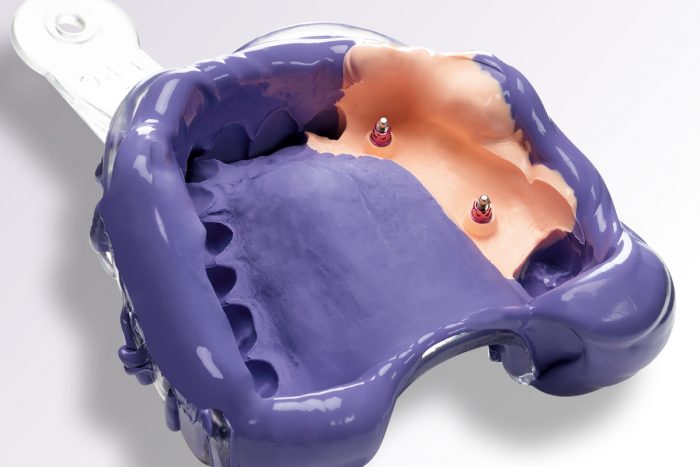
Elastic recovery, defined as a material’s ability to return to its original form once polymerisation is complete, once the compression forces have ceased, is another very important characteristic especially in the case of slanted and non-parallel implants. Generally speaking, the most important errors observed in impressions are caused by the force with which they are removed from the oral cavity, which generates significant distortion or even tears in the material around the areas of interest. A material with good elasticity can therefore reduce this risk and dampen the forces applied during the removal of the impression in the presence of undercuts. In this sense, silicones present advantages over polyethers, which are generally speaking less elastic.
Another characteristic not to be underestimated is the material’s behaviour during the curing phases. The Snap/Set effect, defined as the length of the curing time, starts from the moment in which the material starts to develop its mechanical properties and ends when they are fully developed. The more immediate and rapid this effect is, the more successful the dentist’s impression-taking technique will be. Ideally, a material should have a long working time that allows the dentist to position the impression correctly in the patient’s mouth before it starts to develop its mechanical properties, and a short curing time, in order to prevent the dentist from removing the impression from the oral cavity before the material has completed the curing process.
Once again in this case, impression-taking on slanted implants is a challenge for the dentist, who has to understand when the material has actually finished curing, to allow him to remove it safely from the patient’s mouth without the risk of causing tears or distortions. Although there are various materials available on the market, polyethers have longer curing times (up to 1 day) than polyvinylsiloxanes, as is shown by the hardness data at 15 minutes, 1 hour and 24 hours5.
Discussion
The information provided above favours the interpretation of a study conducted by Schmidt et al. 6, who demonstrated that various impression materials (polyethers and polyvinylsiloxanes) can have a decisive influence on accuracy in reproducing the three-dimensional position of slanted implants. In actual fact, the authors concluded that polyether proved to be the best material for single restorations, especially for non-slanted implants.
However, if multiple restorations with differently slanted implants are required, the polyvinylsiloxanes used with the open-spoon impression technique are more appropriate. The reasons for this most likely lie in the fact that polyether shows poorer elastic recovery characteristics and at the same time greater final hardness and rigidity than silicones.
It can therefore be concluded that, for impression-taking on slanted implants, it is essential to choose a rigid material that at the same time affords good elasticity, in order to not distort the material during removal from the patient’s mouth at the end of curing.
References
1. Moreira, A. H. J., Rodrigues, N. F., Pinho, A. C. M., Fonseca, J. C. & Vilaça, J. L. Accuracy Comparison of Implant Impression Techniques: A Systematic Review: Accuracy of Implant Impression Techniques. Clin. Implant Dent. Relat. Res. 17, e751–e764 (2015).
2. Kim, J.-H., Kim, K. R. & Kim, S. Critical appraisal of implant impression accuracies: A systematic review. J. Prosthet. Dent. 114, 185-192.e1 (2015).
3. Jo, S.-H. et al. Effect of impression coping and implant angulation on the accuracy of implant impressions: an in vitro study. J. Adv. Prosthodont. 2, 128 (2010).
4. Jang, H.-K., Kim, S., Shim, J.-S., Lee, K.-W. & Moon, H.-S. Accuracy of impressions for internal-connection implant prostheses with various divergent angles. Int. J. Oral Maxillofac. Implants 26, 1011–1015 (2011).
5. Profilo tecnico del prodotto: Impregum.
6. Schmidt, A., Häussling, T., Rehmann, P., Schaaf, H. & Wöstmann, B. Accuracy of various impression materials and methods for two implant systems: An effect size study. J. Prosthodont. Res. 62, 245–251 (2018).
Do you want more information on Zhermack Dental products and solutions?
Contact us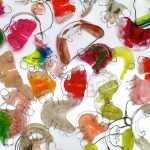
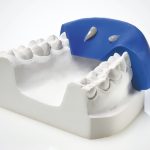
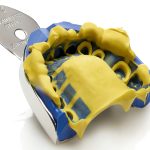
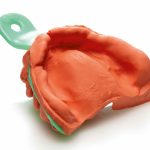

 Zhermack SpA has been one of the most important producers and international distributors of alginates, gypsums and silicone compounds for the dental sector for over 40 years. It has also developed solutions for the industrial and wellbeing sectors.
Zhermack SpA - Via Bovazecchino, 100 - 45021 Badia Polesine (RO), Italy.
Zhermack SpA has been one of the most important producers and international distributors of alginates, gypsums and silicone compounds for the dental sector for over 40 years. It has also developed solutions for the industrial and wellbeing sectors.
Zhermack SpA - Via Bovazecchino, 100 - 45021 Badia Polesine (RO), Italy.


